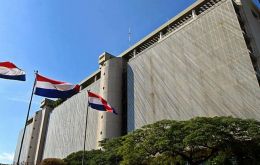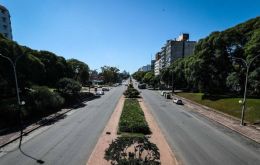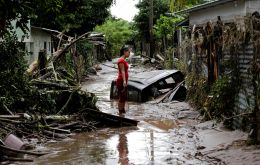MercoPress. South Atlantic News Agency
Tag: GDP
-
Tuesday, June 24th 2025 - 10:25 UTC
Argentina's GDP grows 5.8%, Indec reports

Argentina's Gross Domestic Product (GDP) grew by 5.8% year-over-year and 0.8% compared to the last quarter of 2024 in the first quarter of 2025, the National Institute of Statistics and Census (Indec) reported Monday in Buenos Aires.
-
Thursday, October 17th 2024 - 11:36 UTC
Paraguay's Central Bank ups growth projections for 2024

Paraguay's Central Bank (BCP) has this week upped the South American country's economic growth projection for this year from 3.8% to 4%. On the supply side, the main upward revisions were in the livestock, trade, and tax sectors, while downward adjustments were recorded in electricity and water amid higher domestic demand in line with the good dynamics imports have been registering.
-
Friday, March 24th 2023 - 10:00 UTC
Argentina's 2022 GDP shows improvement from previous year

Argentina's Gross Domestic Product (GDP - the sum of all products and services traded) grew by 5.2% in 2022, a 1.9% improvement from 2021, the National Institute of Statistics and Census (Indec) reported Thursday in a study that also showed that last year's fourth quarter GDP was 1.9% higher than that of the same period of 2021, but 1.5% below the third quarter of 2022.
-
Friday, November 19th 2021 - 08:57 UTC
Paraguay's GDP poised to be better than planned, central Bank says

Paraguay's Central Bank (BCP) Thursday hinted the country's GDP might grow above expectations by the end of 2021.
-
Thursday, September 2nd 2021 - 08:54 UTC
Brazil's GDP suprisingly 0,1% in the red

Brazil's Gross Domestic Product (GDP) contracted 0.1% in the 2nd quarter of 2021, the Brazilian Institute of Geography and Statistics (IBGE) reported Wednesday.
-
Thursday, July 22nd 2021 - 09:46 UTC
Argentina's economy continues to shrink, but some analysts see recovery imminent

Argentina's Gross Domestic Product (GDP) has fallen 0.7% so far in 2021, which in addition to declines in 2018, 2019 and 2020, has led the country's economy to historic lows.
-
Thursday, June 24th 2021 - 09:22 UTC
Uruguay's blooming economy shows covid-induced setback

Uruguay's Gross Domestic Product (GDP) fell 2.8% in the first quarter of 2021 compared to the same period of 2020, according to a Central Bank (BCU) report released Wednesday.
-
Saturday, February 6th 2021 - 07:15 UTC
Falklands' GDP in 2018 reached £254.7 million with a real growth rate of 3,9%

The Gross Domestic Product (GDP) of the Falkland Islands increased by 15.7% between 2017 and 2018 (in nominal terms), primarily driven by high results within the fishing sector that year, according to the recently released Falkland Islands National Accounts.
-
Tuesday, December 15th 2020 - 08:58 UTC
Honduras claims two hurricanes caused damage equivalent to half its GDP

Hurricanes Eta and Iota have caused about US$10 billion in damages in Honduras and affected more than 4 million people, the Central American country's foreign minister said on Monday as he called for international support.
-
Tuesday, May 5th 2020 - 06:58 UTC
US prepared to borrow a record US$ 3 trillion in second quarter; national debt soared above 100% of GDP

United States has said it wants to borrow a record US$ 3 trillion in the second quarter, as coronavirus-related rescue packages blow up the budget. The sum is more than five times the previous quarterly record, set at the height of the 2008 financial crisis.
